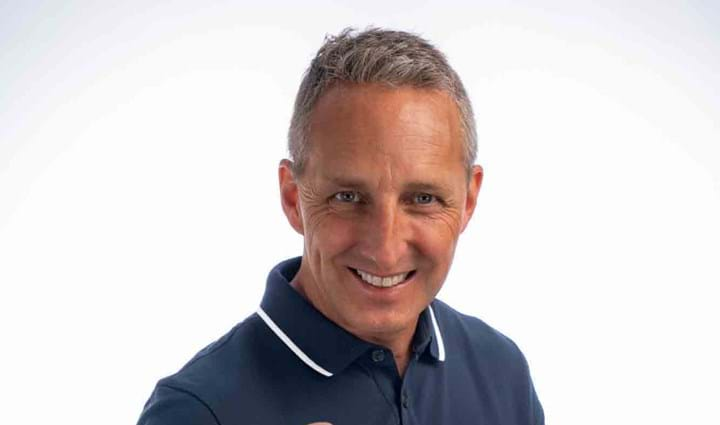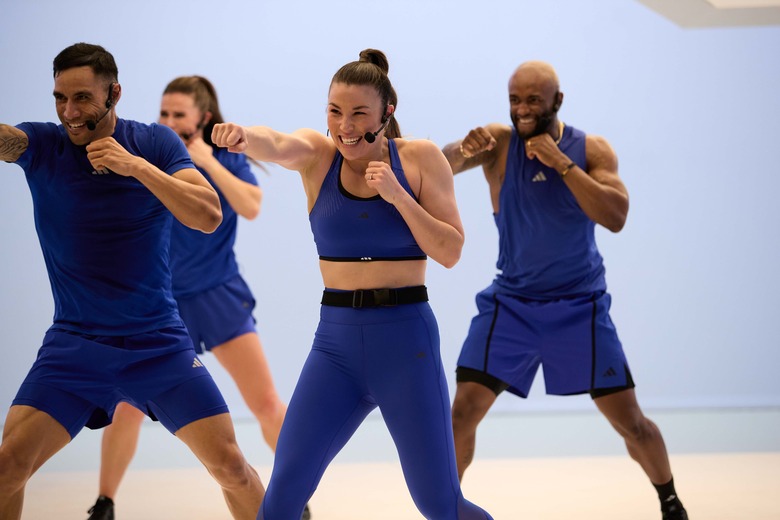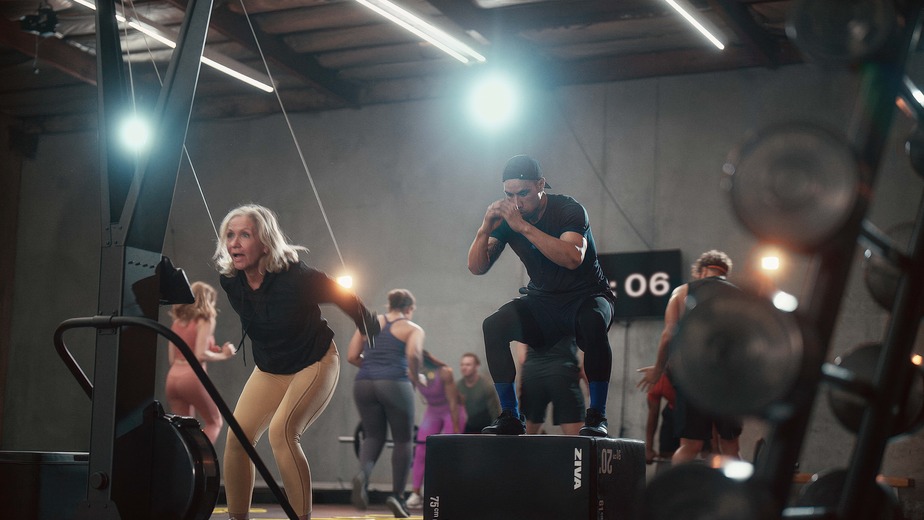
Hi Martin, tell us about your background in fitness?
My name is Martin Seibold and I’ve been in the fitness industry for more than 20 years, holding senior positions at Fitness First in Germany, UK, Benelux, Asia and Australia.
Since 2019, I’ve been the CEO of LifeFit Group – operator of 165 clubs in Germany across a portfolio of successful brands including Fitness First, Barry’s Bootcamp, ELBGYM, Club Pilates and YogaSix. Having a range of diverse brands is great as we can be active in most segments of the market and leverage the learnings from each of our best-in-class concepts to elevate the wider portfolio. We’re on an exciting growth journey and aim to reach 250 clubs by 2028, which will be a 79% uplift from where we were at the start of 2024 (140) and nearly 400% growth on the 55 clubs we started with when LifeFit Group formed in 2019.
How do you assess the industry’s growth prospects in the next couple of years?
I think it’s a great time to be in fitness as there’s plenty of room for growth. The gym penetration rate in Germany is only 13%, while in the Nordics and the US it’s north of 20%. So if we only saw growth of 1% in the German market each year, that's 700,000 new people coming into the market. As and industry we’re at 105% of pre-pandemic occupancy levels, while Fitness First Germany is at 120%, so the gyms are full and we need to build lots more of them across all segments.
Low cost clubs will play a role and that's good because it drives younger generations into the industry and then over time they upgrade to more premium facilities. But i also expect to see strong growth at the lower end of the mid-market, around the €50 per month mark. A lot of people want wellness that comes with the personal touch of Instructors and people at reception to greet them – they don't just want autonomous gyms. That said, there is a place for those types of clubs in neighborhoods where the economics necessitate smaller sites.
The premium segment is difficult, because the cost of retail space in Germany remains at an all-time high, as does the build-out cost. So you’re looking at higher rents and a higher fixed cost base, while building a 2,500m² club with a swimming pool will cost you €7-8m, versus €5-6m a few years ago. So this makes it very difficult to add really high end gyms outside of the major cities where there’s enough of a market for them.
And how far can the industry ultimately reach in terms of penetration rate?
Well ultimately, every person who breathes should go to a gym. I think everywhere in the world will grow by at least 1.5% in the next 10 years, so that would see the industry double in size. Most markets in Europe are at 10 to 15%, but where you already have around 23% in Norway, will they go to 40%? We can’t be sure, but places like California and Texas have shown that you can get close to that. With over 60% of the younger generation utilizing gyms post-pandemic, this will over time ensure higher penetration rates.
There are always new threats emerging for the industry, but as we’ve often seen, these can actually bring massive opportunity. Right now everyone is talking about weight loss drugs being a potential threat to the industry, but when you drill down into the detail, you see this could be the catalyst for substantial gym growth. People lose nearly as much muscle as they do fat when they take the latest weight loss drugs, so that makes strength training more important than ever.
With every change in society, people see it as an opportunity or a threat and LifeFit Group wouldn’t be where we are if we didn’t always take the glass half full view. We see the emergence of weight loss drugs as a big opportunity to drive more people into gym-based activity, both for restorative and preventative reasons. We know exercise offers so many more benefits beyond weight loss, so the stage is set for clubs to be bold and seize this opportunity.
Maybe one day there will be a pill that gives you all the physiological benefits of exercise, but even that won’t match the whole package that we offer. People come to us for community, to make and meet friends at a place where they can belong. And making sure you’re creating a great environment for them and elevating the experience is key. Right now, we have an NPS score far north of 40 – some months we’re hitting 50 and that’s a KPI that keeps us focused on making sure members want to come back to us. Amazon has been crushing it for 30 years and there are still bookstores around; you can swipe an app to get food at your home and yet restaurants are busier than ever. I think it will be the same with fitness.

What can you tell us about LifeFit Group’s growth strategy?
As I mentioned, we’re on a strong growth trajectory and plan to add 30-50 clubs per year for the foreseeable future. After 10 years of great partnership with Oaktree Capital Management, we now have a new private equity backer in Waterland Private Equity who are fully bought into our vision and excited about the journey ahead. This backing will enable us to accelerate our buy and build expansion strategy where see lots of opportunities in the German market, particularly through consolidation. Having acquired many operators in recent years, we’ve demonstrated a strong track record for reinvesting in these clubs and helping to take them forward, while still respecting their history and where they’ve come from. This is especially important in Germany, where founders of smaller chains who then sell are likely to remain in their local area, so they want to see their legacy in good hands so that their reputation in the community is protected. We’ve demonstrated on countless occasions that we’re a trustworthy partner and I think this will hold us in good stead for further club acquisitions.
And what about your plans to continue growing each club and boost profitability across the estate?
Over the last year we’ve put a lot of investment into the various components of our gym floor, such as the free weights performance area, seated equipment, physio and stretching section, booty zones, and so forth. That’s been great because our gym floors are now heaving, but we don’t see too much opportunity for further innovation there in the next couple of years, so now we’ve decided to shift our focus back to our studios and group exercise. So there's a lot of investment going into our studios to improve the lightning, sound, floor equipment and of course the programming. There’s also a big focus on operational excellence to support this.
What does operational excellence in group training look like across your entire estate?
When we acquired new clubs, we noticed a gap in group exercise quality compared to Fitness First’s core clubs. So, I asked the team: What’s holding us back? The key challenges were focus, budget, and management.
First, focus. Gym floors naturally demand a lot of attention and investment, leaving group exercise somewhat sidelined. We’ve now increased focus across all levels—from the gym floor to regional leadership.
Second, budgets. Acquired clubs often had just 15 classes a week; it wasn’t realistic to suddenly budget for 30. Group fitness requires investment in license fees, staff, and resources, so we’ve systematically increased budgets to support growth.
Third, management. Scaling group fitness requires operational excellence. To run 30 classes a week, you need about 15 instructors. Finding, training, and managing them – ensuring they show up, arranging substitutes, and maintaining quality – requires structure. We’ve also added regional support ensuring clusters of 4-6 clubs have a dedicated group fitness lead, along with dedicated coordinators at the club level.
This renewed focus, along with increased budgets and staffing, has enabled us to significantly elevate group exercise quality across the board.

What are the commercial drivers of your strategic focus on group training?
The historical industry average has typically seen 35% of members not attending their club in the past 12 weeks, but since the pandemic, this has dropped to 8% across the Fitness First Germany estate, so our clubs are massively full. Members visiting more often means higher retention levels – we’re now sitting at 80% retention, which is fantastic. And we want to maintain that level, so we want more people using our studios because we can facilitate a lot more of them in classes. At the same time, you create strong communities, sparked by Instructors mingling with the members and helping them forge connections. It means our members are forming more friendships, making them far less likely to leave the gym, so our studios are a central pillar of our growth strategy. The investment in our studios is small in comparison to the returns we’ll see if we can keep our retention rate high, so we see group exercise as offering a great return on investment.
We see it as a big driver of member acquisition as well, particularly as group exercise is a really social activity, so members are more likely to bring their friends along. Because 90% of our new joiners sign up digitally now (either at home or on their phones in club) we no longer have dedicated sales teams – all of our teammates are supporting the sales journey. This is especially true for the teammates involved in group exercise, who tend to be very charismatic and able to quickly build connection with everyone they engage with. And ultimately, the studio is the most motivating part of the club, so if you come down and you have a great experience in the class, then there’s a high probability you will join the gym.
What will be your approach to programing?
Our approach is to choose best-in-class in everything we do and that’s reflected across our various brands – Fitness First Germany, Barry’s, Club Pilates and ELBGYM – along with the facilities and everything you find in them: the equipment, the staff and the experience. And the same applies to the timetable, so our best-in-class approach will see Les Mills classes make up 50% of our timetable moving forward. They have over 20 programs and we’re giving each of our clubs the ability to choose 5 to 7 programs to form the foundations of a really great timetable.
And in times where it's very difficult to get good Instructors, the quality of the training that you give them becomes even more important and that’s another area where Les Mills is best in class. We love the concept of creating rockstar Instructors and it meaning you might not be the best technical person, but it means you need to have a lot of empathy and an ability to connect with people, while delivering a consistently great experience. For large operators like ourselves, it's about having a structure and a system in place that enables us to deliver the best class day in, day out. If you have 6-8 classes a day on your timetable, that's over 50 classes a week. How do you make sure that you deliver 50 times out of 50?
What other innovations can we expect to see?
One of the things we’re really excited about is bringing more of the studio out onto the gym floor, to build engagement and create an amazing atmosphere. To support this, we’re looking into LES MILLS CEREMONY – a program that redefines the gym floor. It’s functional group training by stations, incorporating the magic Les Mills is known for: great sound, music, beats, and choreography that evolves continuously to keep it fresh and exciting.
What makes CEREMONY special is how it transforms the atmosphere of the entire club. When you have 35 people participating, the energy is electric – it changes the vibe of the whole gym and draws in other members.
It’s a format that’s accessible to all ages. While younger members are naturally drawn to the energy and social aspect, older members can also participate, as the exercises are easily adapted. In fact, many older members enjoy functional training because it mirrors how they’ve stayed fit for decades – using bodyweight movements and foundational exercises long before gyms became widespread.

A lot of clubs have sought to differentiate through creating their own group training concepts – is this something you’ve looked at?
It’s a topic of conversation that comes up a lot in the industry. When I went to New Zealand, I was stunned by the amount of investment and resource that Les Mills puts into the creation of each and every program release. They have world-leading creatives, musicians, and scientists tracking the very latest trends and working for months to craft each release, testing and refining them over 50 times across their 12-club estate. And I came away thinking ‘Why on earth would we try to do it ourselves?’ We're not trying to build treadmills ourselves, or create our own flooring. So why would we start building studio programs ourselves when they’re going to be nowhere near as good? There’s no point worrying about differentiation if you aren’t doing the basics right. And if our competitors are offering the same programming as us then I’m very relaxed about that. Many of them have the same equipment as us and similar areas of their club, so it ultimately comes down to how you deliver the best experience and leverage your people – one of the only differentiators that other clubs can’t copy.
How is Fitness First leveraging its people in new ways to support your new approach?
Personal Training (PT) is a great example of this. During the pandemic, the number of PTs in our clubs dropped significantly – from around five per club to just one or two. We’re now back to three per club, which is progress, but still below pre-pandemic levels.
We’ve reimagined how PTs integrate into the club experience. Instead of relying on PTs to sell services at the point of sale or assigning new members to less experienced trainers, we encourage PTs to teach classes and be more visible on the gym floor. Group classes build community, showcase expertise, and help PTs generate their own business.
This approach prioritizes quality over quantity. We’d rather have fewer PTs delivering exceptional value than more PTs providing a subpar experience. By focusing on high-quality training and integration, we’re creating an environment where PTs thrive and members benefit.

How do clubs strike the right balance between live and digital fitness offerings?
If you know of a gym chain that has perfectly integrated live and digital fitness with high usage rates, please introduce me – I haven’t seen it done yet! Even with great apps and digital platforms, usage rates tend to be low. For instance, if 10% of members regularly use a digital offering, that’s considered a success.
At Fitness First, 92% of our members physically visit the gym, which shows where their primary focus lies. Digital offerings, like the EGYM app we use, are valuable as supplementary tools. Members can book classes, track their workouts, or access on-demand sessions. However, usage is minimal compared to live experiences.
That said, digital has its place. For example, we use digital classes during off-peak hours and on the gym floor for functional training. LES MILLS CEREMONY is a standout example – it blends technology with live coaching to create a unique, engaging experience. Ultimately, digital is an important complement to live fitness, but the in-person experience remains irreplaceable.
What is the key to building a great team?
We use what we call the “Sunday Tea Index.” Simply put, if you wouldn’t invite someone to your home on a Sunday for tea, don’t hire them. Your team should be made up of people you respect and genuinely want to spend time with.
Beyond that, we view every team member as an airplane with two wings: a private wing and a business wing, plus a body and a pilot. For someone to succeed, all four dimensions need to be in balance. If their private life is struggling, it will impact their performance. If they struggle with their business wing, their productivity goes down. If their health isn’t in shape, they can’t give their best. And if the pilot (their mindset) isn’t clear and focused, the plane won’t fly.
Finally, we believe in inspirational leadership. Every leader in our organization is actively involved in fitness – they train, set personal fitness goals, or compete as athletes. This fosters discipline, resilience, and camaraderie, which translates into effective leadership. When you hire the right people, support them holistically, and lead by example, you create great teams.
What’s the best advice you’ve received to help you succeed in your fitness career?
My father once told me, “You don’t have to be the best person in the room, but you do need to have the best team.” That advice has guided me throughout my career.
I’ve always focused on surrounding myself with talented people, giving them the tools and opportunities to succeed – even beyond their own expectations. Some of the best people I’ve worked with have gone on to bigger roles outside my organizations, and I take pride in having been part of their journey.
It’s not about being the star; it’s about creating an environment where the team thrives. When you align incredible talent behind a shared vision, anything is possible.
READY TO UNLEASH YOUR NEXT GENERATION OF MEMBERS?
Les Mills has crafted a new series of programs to meet the specific demands of Gen Z and put your club in the fast-lane for growth.
DISCOVER MORE
